NOAA – A Failed Agency
 The Magnuson Act became the law of the land in 1977. Seven years later, the 200-mile limit between Canada and the United States was decided at the world court in the Hague, Netherlands. Both had good intentions, however both failed. Magnuson was supposed to keep fish stocks at a sustainable level and keep maritime communities, like Gloucester prosperous. It made sense. Plenty of fish meant plenty of fishing, processing and a strong waterfront economy. After NOAA Magnuson was signed into law and kicked out the foreign vessels, they contradicted their own intentions of “overfishing” and built up the American fleet by offering government-backed low interest loans. This set off a frenzy of boat building at a time when fish stocks were plentiful. The fleet doubled in size in less than a decade. This offset the gains made from keeping foreign vessels out.
The Magnuson Act became the law of the land in 1977. Seven years later, the 200-mile limit between Canada and the United States was decided at the world court in the Hague, Netherlands. Both had good intentions, however both failed. Magnuson was supposed to keep fish stocks at a sustainable level and keep maritime communities, like Gloucester prosperous. It made sense. Plenty of fish meant plenty of fishing, processing and a strong waterfront economy. After NOAA Magnuson was signed into law and kicked out the foreign vessels, they contradicted their own intentions of “overfishing” and built up the American fleet by offering government-backed low interest loans. This set off a frenzy of boat building at a time when fish stocks were plentiful. The fleet doubled in size in less than a decade. This offset the gains made from keeping foreign vessels out.
Well, it backfired. While we like to think that the foreign fleets raped our fish stocks, it was really NOAA’s’ misguided encouragement and failed policies. “Go get’em boys, it’s all ours now” was their signal to fishermen.
Just like low-interest loans that we see today which has set off a real estate frenzy, low interest loans set off a boat-building frenzy. Looking back, the poor fishing stocks didn’t have a chance.
NOAA’s scientists in Woods Hole warned of a catastrophe, but no one listened. What did they know besides science, sophisticated projections and modeling? How could they predict the future?
Instead of using science, under Magnuson, NOAA set up Fisheries Management Councils to make the rules. The members were comprised of political appointees for the most part and people who had a stake in making sure that not too many rules got imposed.
This failed system of the fox guarding the hen house is the root of the collapse of fish stocks. Beginning with redfish in the mid 1980’s, then scallops, cod, fluke, you name it, all these species got into trouble and caused pretty much a collapse of the entire eastern seaboard.
It would take a novel to cover all of NOAA’s failures, but just take a look around. Better yet just take a drive up the NOAA Building at 55 Great Republic Drive next to the Webb plumbing building and you will see a giant government building that holds 250 people and cost the tax dollars multiple millions of dollars to operate.
Still, while everyone else has gone back to work, NOAA employees continue to work from home. In fact, there are more people working at NOAA in that one building – not counting Woods Hole – than there are fishing boats in Gloucester.
What does that tell even the most casual observer? It tells you that NOAA is a failed Agency.
It’s actually much worse. NOAA is a bloated agency that has not provided a dividend to the taxpayer in 45 years – since Magnuson was enacted. All too often, NOAA pats itself on the back for rebuilding stocks, but that simply is not true. They gave the Gloucester Seafood Display Auction nearly $1 million dollars in Saltonstall-Kennedy Grants to process redfish. NOAA proclaimed that redfish was totally rebuilt. To prove that claim, they gave away money in the form of S-K Grants. That grant was pure politics and NOAA trying to save face after dragging the Ciulla Family through the mud. At the end of the day S-K Grant produced next-to zero processing and provided zero jobs – but made face-saving front-page news.
Redfish proclaimed to be rebuilt on paper is easy to say and who is going to challenge NOAA?
That’s easy to answer. History has the answer. It always does and NOAA is all wet!
From the mid 1930’s until the mid 1980’’s Gloucester had a redfish fleet – not just two or three boats fishing for the remnants of a once prolific and glorious fishery.
Redfish are not rebuilt.
Another bumbling NOAA move began on paper back in the mid 1990’s when they proclaimed herring to be an “underutilized” fishery. Remember that glittering generality? Remember that phrase? “Go get’em boys”, herring is going to save the day. Well, it didn’t. Herring was never “underutilized” and whatever there was on paper, has now evaporated. Just a few months ago in the Gloucester Daily Times there was a front-page headline: HERRING DECLARED A DISASTER”.
NOAA got it wrong again.
You may ask, well what about scallops and striped bass? Yes, those two totally different species did come back, but it was not due to NOAA or any of its policies. In fact, it was just the opposite. NOAA’s original policies led to their collapse and people just stopped fishing for them. Stripper was a little bit different, but in essence, the only thing that saved either fishery was a near shut down of both and a lot of pain and suffering on the backs of fishermen, fish dealers, and fish workers.
The next tragedy waiting to happen is haddock. Fishermen are allowed to catch haddock before they reach sexual maturity. However, once again, like herring, NOAA says that “on paper” haddock are rebuilt. Again, what do they say, “Go get’em boys”, and since there’s barely anything left to catch with such strict limits on cod, fishermen have limited choices and “baby haddock” is one of them.
It’s a disaster waiting to happen. Just go to your local seafood counter and buy some scrod haddock. One fillet is barely a half of pound – a full two years before it has reached sexual maturity. That’s not sustainable and it’s not responsible management policies.
The moral of the story is that Magnuson was supposed to manage both fish and fishermen. It’s 45-year history has been a disaster. They get an “F” on their report card. From Portland, Maine all down the eastern seaboard, fishing towns like Gloucester are a shell of their former selves.
Meanwhile, however, during these 45 years (half a lifetime if you’re lucky), NOAA built a two-story palace at One Blackburn Drive for millions. We know it today as the Medical Center.
In 2008, NOAA built a four-story palace just up the street to accommodate 250 employees. So, you see, as fishermen and fish houses were going out of business, NOAA had its head stuck in the sand like an ostrich blindly hiring employees at an unprecedented rate. In 1990, NOAA had around 100 employees. Today they have approximately 250. If you think there’s something wrong with this picture, then you would be right.
We have an inept, unplugged government agency asleep at the wheel costing taxpayers hundreds of millions (probably billions in 45 years), and without a dividend.
As a former fisherman, boat owner, fishing gear businessman, former Chairman of the Cape Ann Democratic Party, Artist, commercial waterfront property owner, I speak from years of experience. I’ve seen it all. I’ve seen the good old days when prosperity generously lapped the shores of Gloucester and I’ve seen it all slowly fade away.
NOAA was put in charge of this on a national scale in 1977 and should be held accountable. For starters, I ask all interested parties to contract their Senators and Congress men and women and demand an independent audit of the efficacy of NOAA right here in Gloucester – America’s oldest fishing port established in 1623. NOAA requires an internal investigation by the Commerce’s Inspector General’s office.
When one building has more people in it than all the fishermen, fish cutters, fish workers, truck drivers in the city, I would like to know why they need all those people and where and what the money is being spent on. Where’s the dividend from our tax dollars?
In summary, NOAA is a failure, continues to grow with unbridled restraint, and has nothing to show for its efforts. I would be willing to bet that the industry would be no worse off and probably better off, if NOAA never existed. It has wreaked nothing but havoc for many families.
Sam Parisi, Gloucester, Mass


































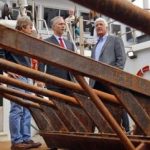


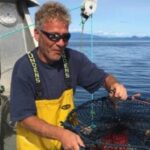
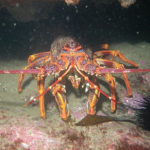


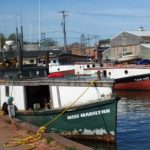
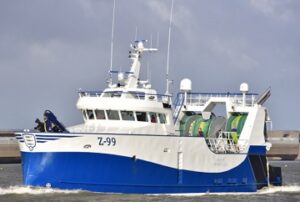



I am hoping for a senator to pick up on this ,NOAA is so big perhaps they are afraid to take them on
My father, Matt Cooney, aka The Little Professor, was a lumper for decades. I remember him bringing home haddock that (at the time) was taller than I was. I haven’t seen a decent size haddock fillet in years. Thank you for pointing out how it happened.